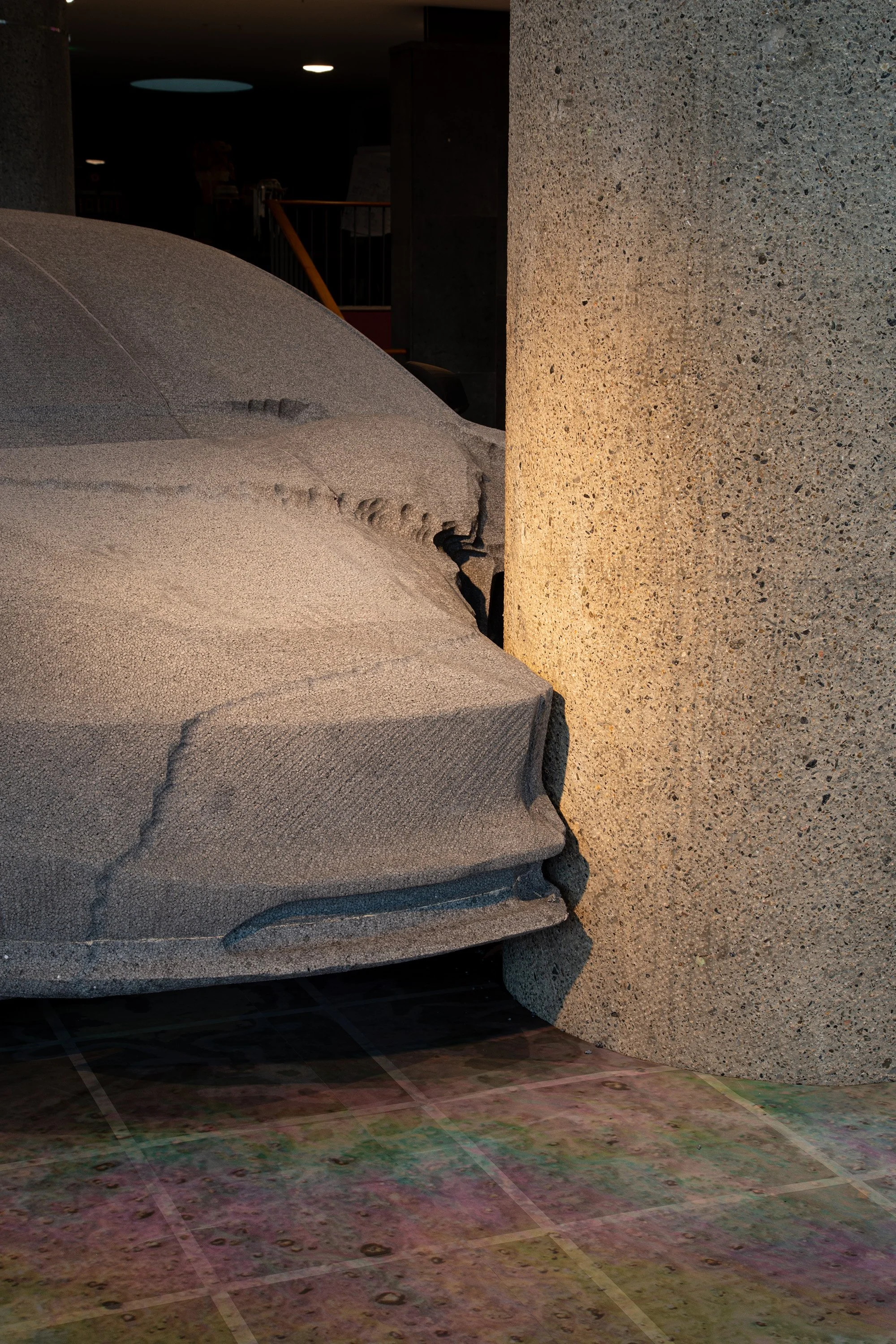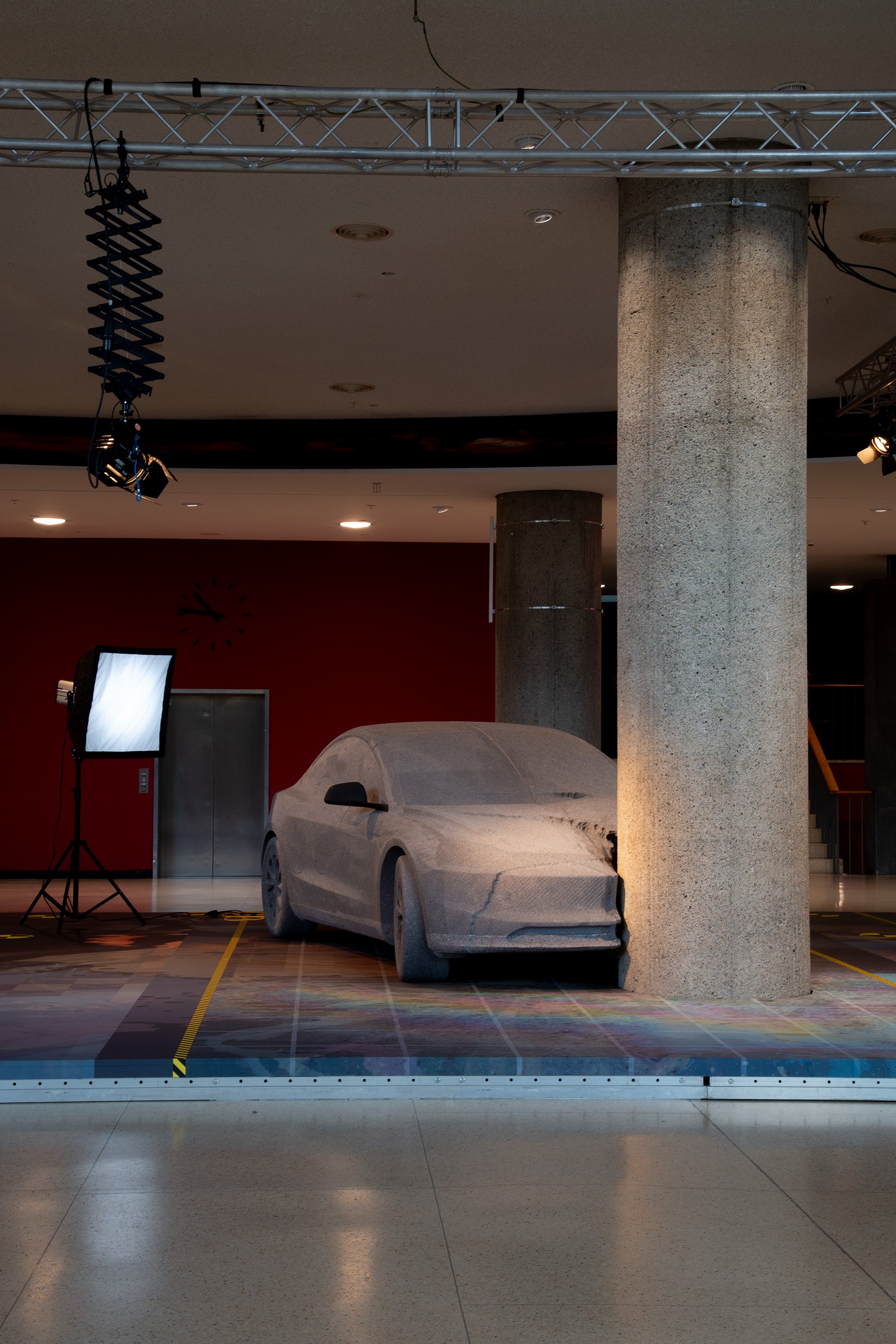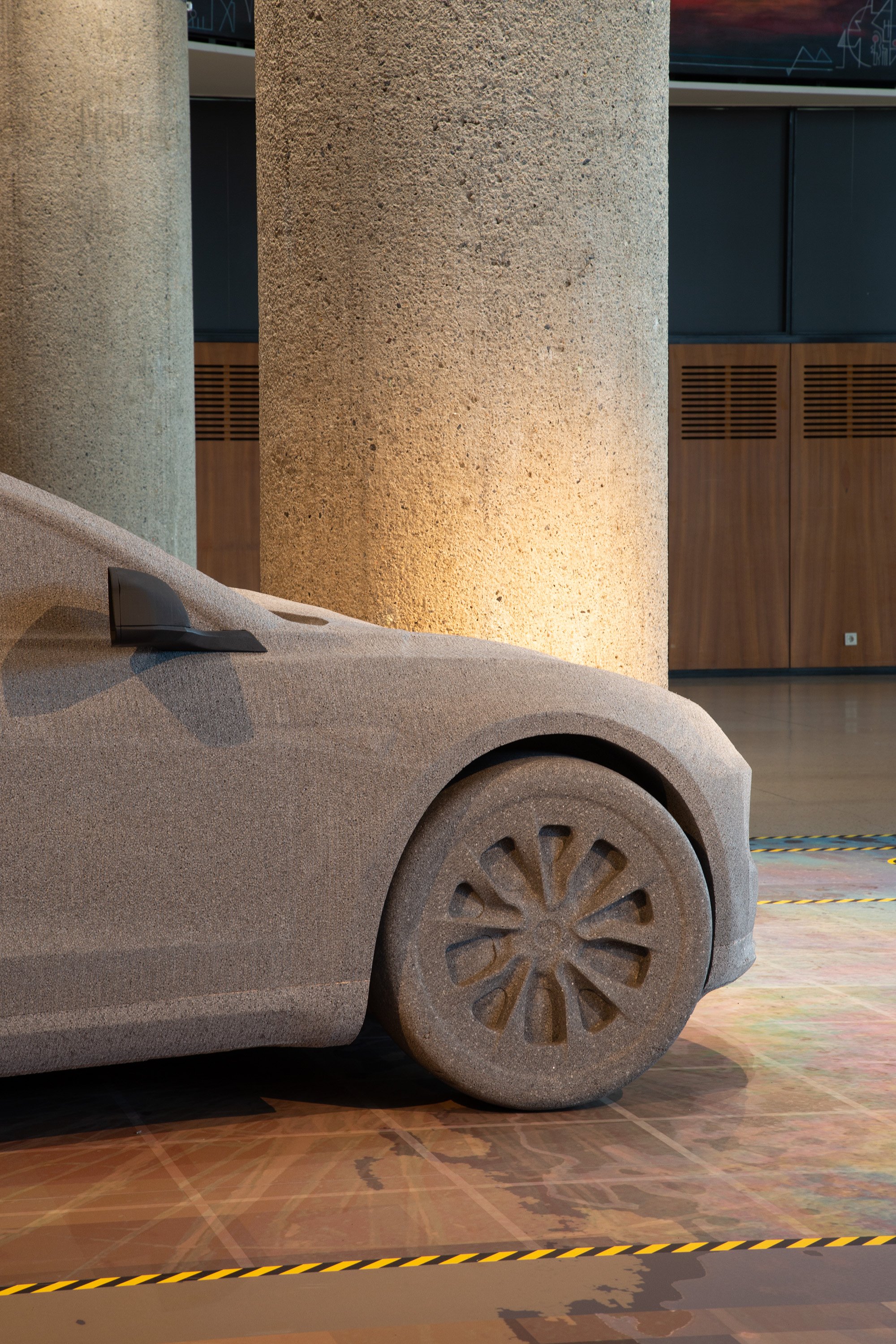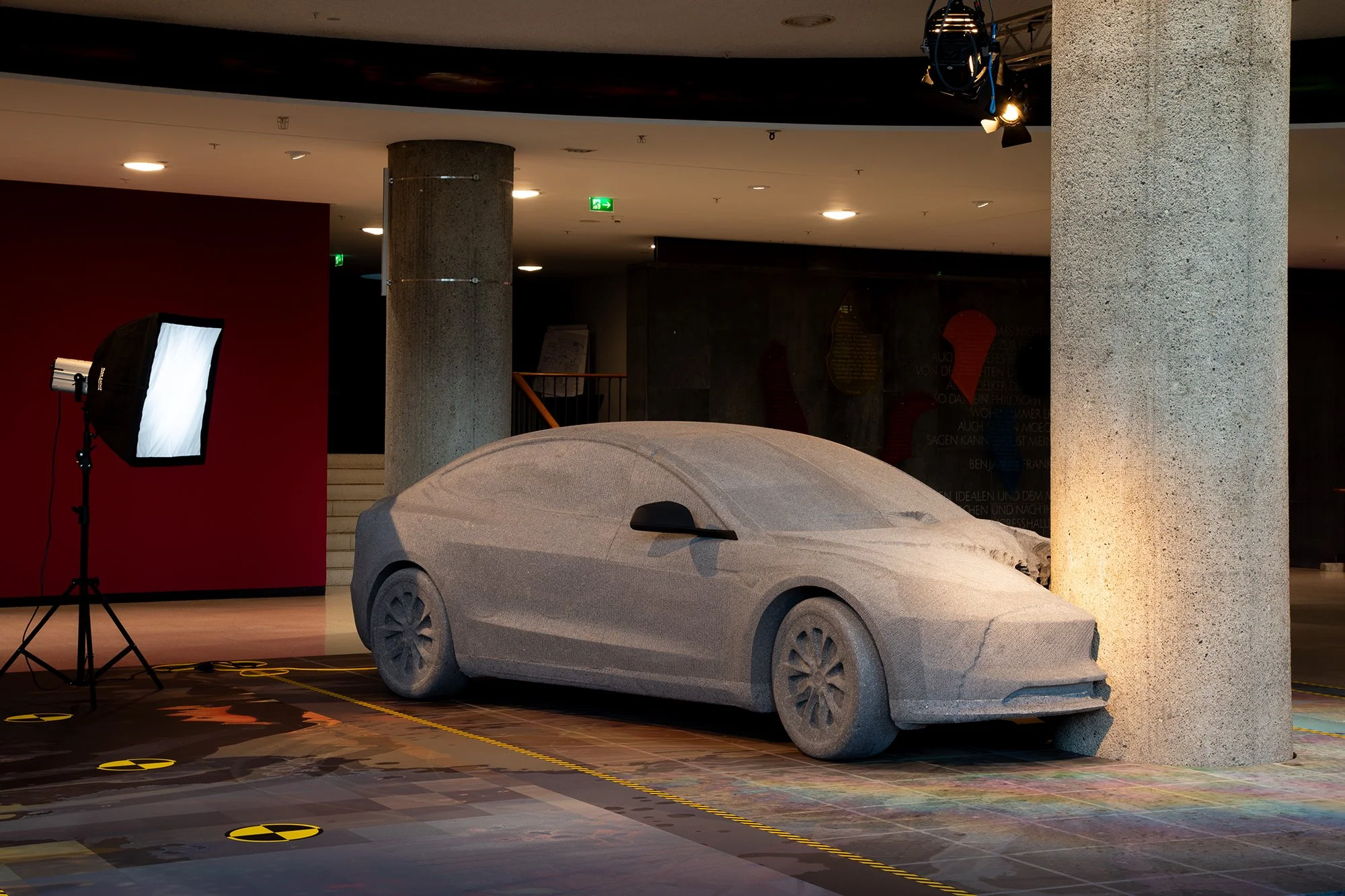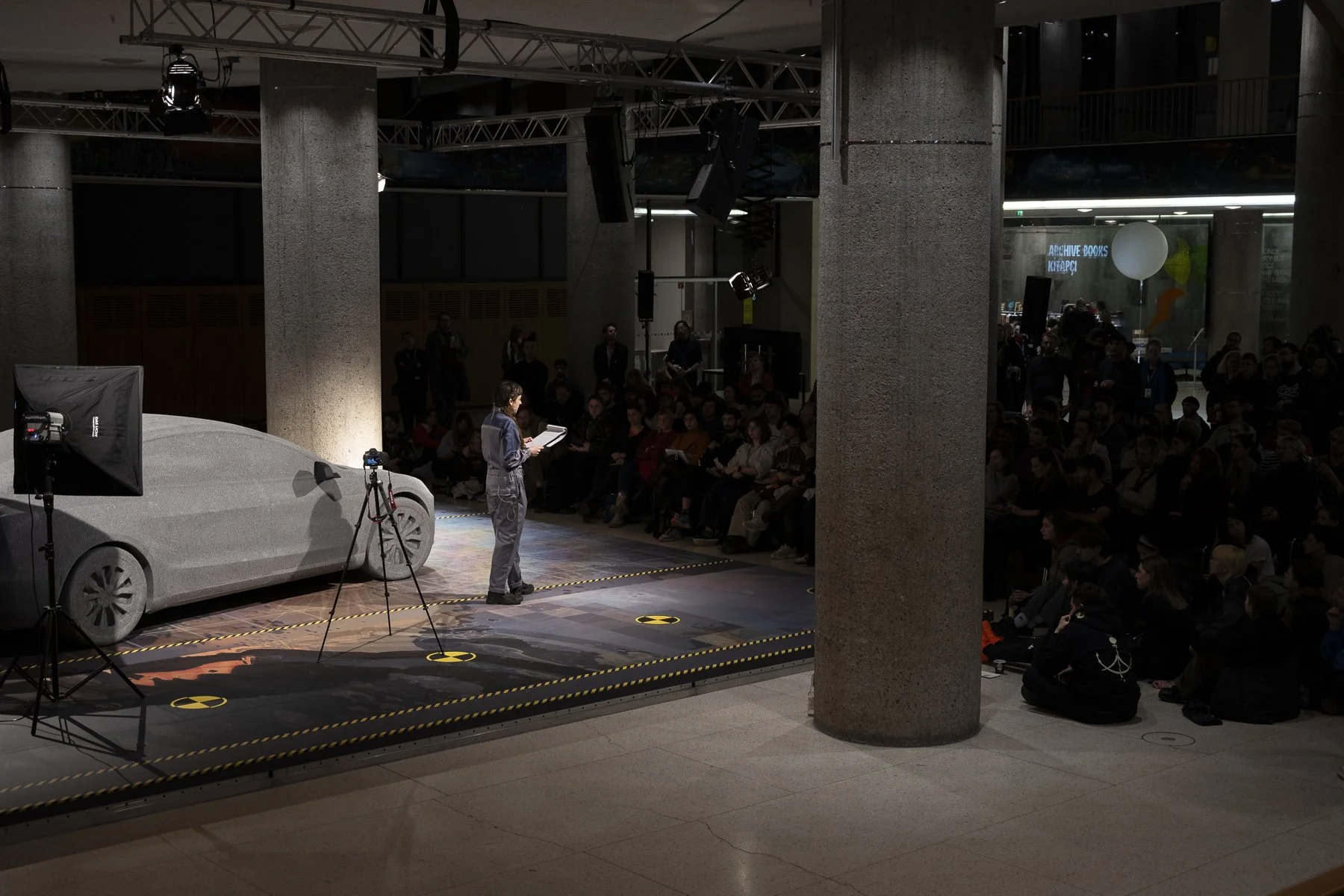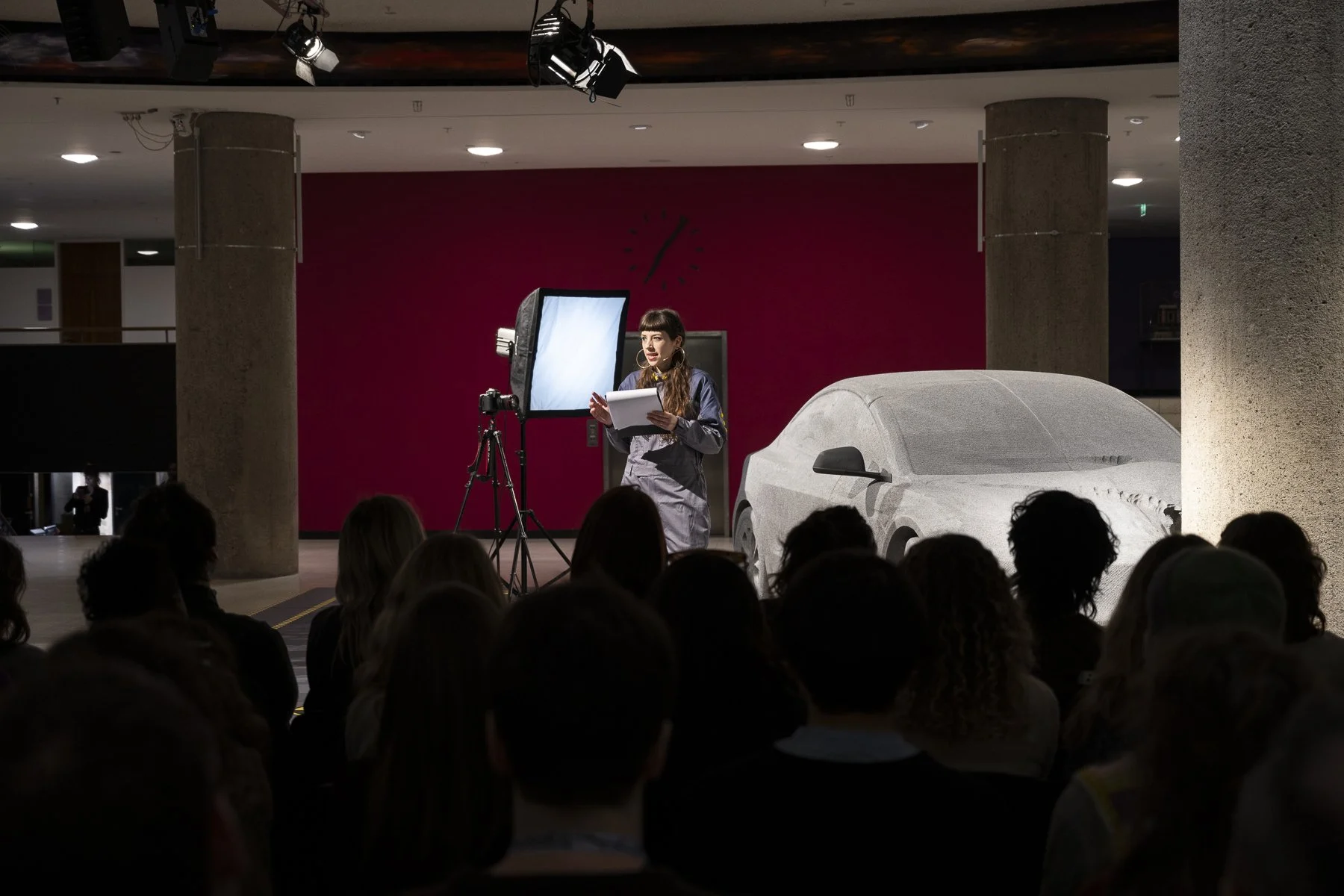DARK ADAPTATION
2025
Dark Adaptation was a sculptural installation and accompanying lecture performance which took place in Februrary 2025 at HKW (Haus der Kulturen) Berlin, commissioned by Transmediale.
Milled styrofoam Tesla model, vinyl print, metal staging, photographic equipment
Dark Adaptation is an installation that includes a 1:1 scale model replica of a Tesla car, which was ‘crashed’ in animation software, and then milled using modelling foam. It is displayed on a printed collage stage alongside lighting rigs and photographic equipment.
Influenced by the difficulties autonomous vehicles face in detecting the flashing lights of emergency vehicles, Dark Adaptation probes the limits of how autonomous vehicles ‘see’. Set in a crash-test centre of the future, the installation and accompanying performance depict an evolutionary regression of the autonomous vehicle: one in which its sensors are hacked to collide with the fleshy rhythms of data that emerge from the human body. The work brings the site of mining from the digital to the geological into the same space, where the oil spill is used as a metaphor for the slippery journey taken between these two spaces.
We are in a car crash test centre, sited on an inactive on-shore oil rig facility. Petrol cars are no longer being manufactured and many crude oil extraction sites are in decommission. Autopilot features have sophisticated over the years with the last known traffic accident occurring over a decade ago.
The site has been taken on as testing ground for enacting and exploiting the process of dark adaptation, a series of actions that aim to “reintroduce” the crash, returning to a world where control can be lost, and the body can become fragile once again. It has been determined that image-making is a key tool in this process. The image of the crash has to be fed back into the car’s learning system as new data, polluting its own sense of reality.
Since no autonomous vehicle is capable of crashing, a replica has to be created.
Excerpt from lecture performance:
Now the question is how to crash the replica. What characteristics of the crash need to be extrapolated? Might we draw upon an extensive catalogue of historical images depicting car accidents, and use them as a data set to generate a new, kind of average image of an accident? However, the generated images - they have no indexical link to the object of the car. ‘They replace likeness with likeness,’ as Steyerl argues in her text on Mean Images. The mediocre image that would be generated by these means would not be enough to infiltrate the system. No, it needs to be an exact replica, one that is made by converting real-world data into a 3D representation. The original object needs to be mapped - there is its indexical link.
The process of 3D scanning shares many traits with the process of photographing using a camera. Like the traditional camera, the 3D scanner can only collect information about surfaces that are not obscured. It can only map what the eye can see. 3D scanners work by projecting light onto an object and capturing its reflection. By measuring the time it takes for the light to return, the distance of each point can be determined. These can be applied to XYZ co-ordinates which are then used to digitally reconstruct a 3D representation of the object. When the light is projected onto the surface of the original un-crashed car - the sudden flash of light followed by low light conditions - the process of dark adaptation - begins. The memory of the accident starts to become implanted. The car dreams of its past.
But the action of the crash, the simulation of the accident, has to begin its journey in virtual space. Through this process, the car’s digital mesh is bent and distorted, polygons stretching as the framework of the vehicle fractures into geometric chaos. But as the car hits the pillar, there is no dust. There is no glass, or metal shattering, just the quiet bending of virtual geometry. This scene may be enough to invade the smart systems on which the contemporary car relies. But the memory of the accident in its visceral form is absent.

